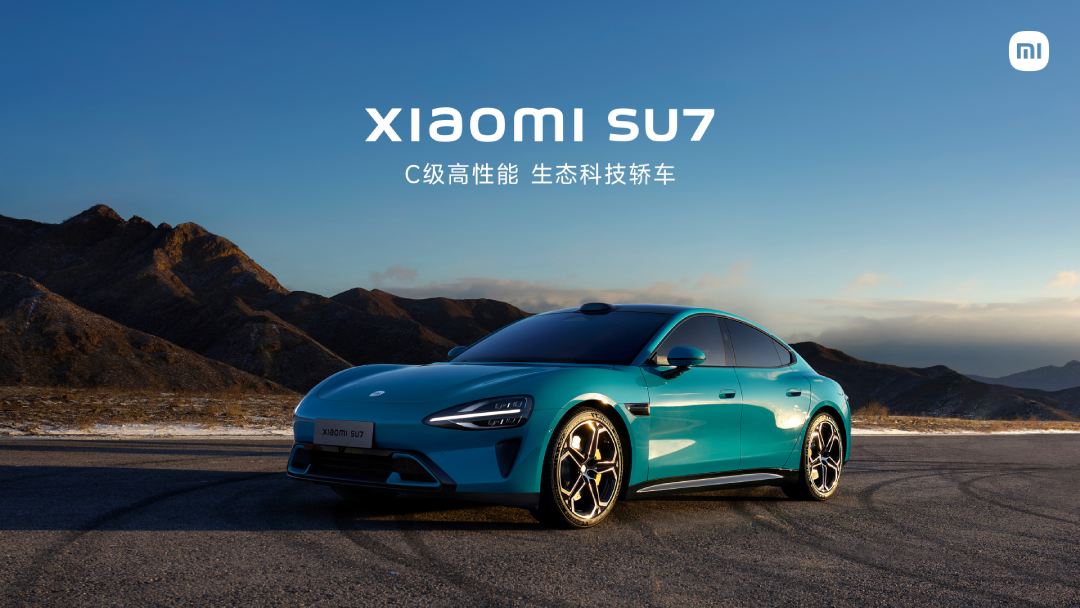Xiaomi Electrifies the EV Market: SU7 Debuts with 90,000 Orders in 24 Hours
The SU7 boasts impressive features, including a claimed range of up to 800 kilometres on a single charge and a 0-to-100 km/h acceleration time of a mere 2.78 seconds. The top speed is 265 kilometres per hour.
Smartphone maker Xiaomi has ignited a spark in the electric vehicle (EV) industry, receiving a staggering 90,000 orders for its inaugural electric car, the SU7, within just 24 hours of its launch. This bold move into the EV market has also driven a significant increase in Xiaomi’s share price on the Hong Kong Stock Exchange.
Beyond its reputation for dominating the smartphone market, Xiaomi has surprised industry experts and consumers alike with its entrance into the fiercely competitive world of EVs. The SU7 boasts impressive features, including a claimed range of up to 800 kilometres on a single charge and a 0-to-100 km/h acceleration time of a mere 2.78 seconds. The top speed is 265 kilometres per hour.
Xiaomi’s aggressive pricing strategy appears to be a key factor in the early success of the SU7. Starting at a competitive 215,900 yuan (Rs 24.8 lakh)to 299,900 yuan (Rs 34.5 lakh) for its top model in China, the SU7 undercuts its major competitor in the Chinese market. Tesla’s Model 3 sedan starts at 245,900 yuan. This strategic pricing positions the SU7 as an attractive option for budget-conscious EV enthusiasts.
Lei Jun, Xiaomi’s founder and CEO, expressed confidence in the SU7’s capabilities. He asserted that the standard version of the SU7 surpasses Tesla’s Model 3 in 90% of specifications. While acknowledging there are two areas where Tesla currently holds an advantage, Jun expressed confidence that Xiaomi will close the gap within the next three to five years.
The SU7 boasts a sleek four-door sedan design, offering ample interior space for passengers and cargo. Its length is 4997 mm, width is 1963 mm and height is 1455 mm. The entry-level variant comes equipped with a respectable 73.6 kWh battery pack, while the top-of-the-line model features a larger, 101 kWh battery, providing extended range for those who crave longer journeys between charges.
Deliveries to customers are set to begin by the end of April, marking the official arrival of Xiaomi in the EV market. Over the past month, Xiaomi shares have surged over 25%, reflecting investor confidence in the company’s diversification strategy.
Xiaomi’s aggressive pricing, impressive features, and commitment to continuous improvement position it as a serious contender in the race towards electric vehicle dominance. With initial sales figures exceeding all expectations, it will be fascinating to see how Xiaomi navigates the EV market and establishes itself in this rapidly evolving industry.
Additional Details:
Powertrain options: While specific details haven’t been released, Xiaomi has hinted at two potential powertrain configurations. The base model is expected to feature a rear-wheel drive setup with a single electric motor producing around 295 horsepower (220 kW). Higher-end models are expected to boast an all-wheel-drive layout with dual electric motors, potentially generating a combined output exceeding 660 horsepower (495 kW).
Technology: Xiaomi has remained tight-lipped on specific details regarding the SU7’s technological features. However, based on the company’s expertise in smartphones, it’s reasonable to expect a high-tech interior with a user-friendly infotainment system, advanced driver-assistance features, and seamless smartphone integration.
Charging: Xiaomi hasn’t revealed official charging specifications. Considering the claimed range and battery sizes, it’s likely the SU7 will support fast-charging capabilities, potentially enabling rapid charging from near-empty to a significant percentage of battery capacity within a short timeframe.
Read More
India Govt Approves New Electric Vehicle Policy: Will Tesla Enter India?



